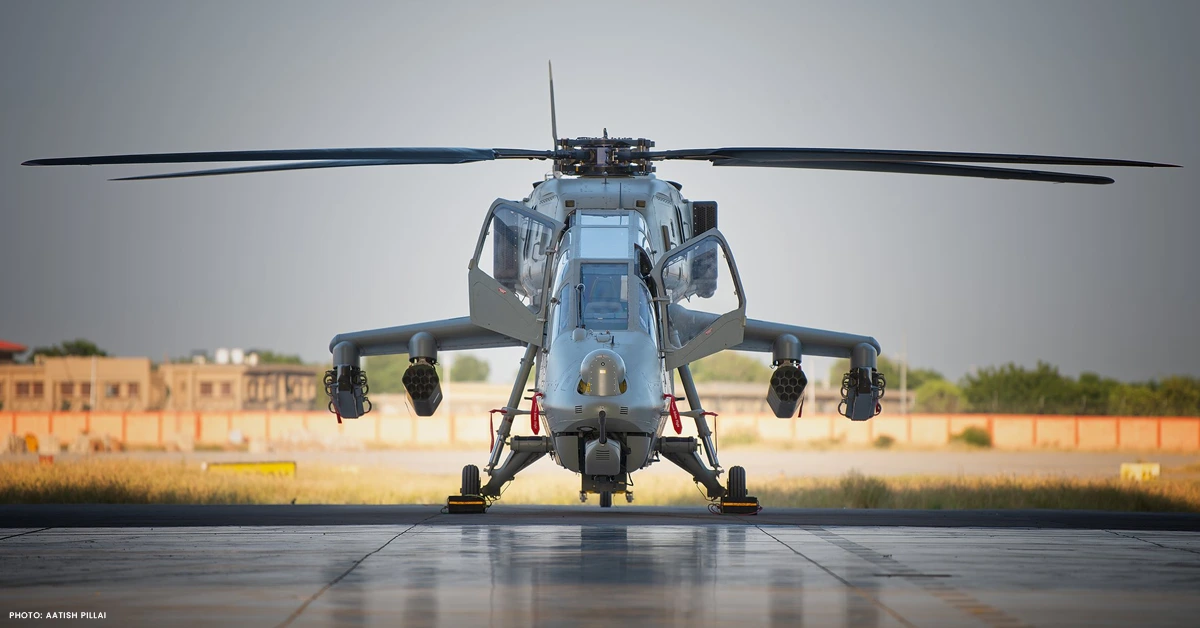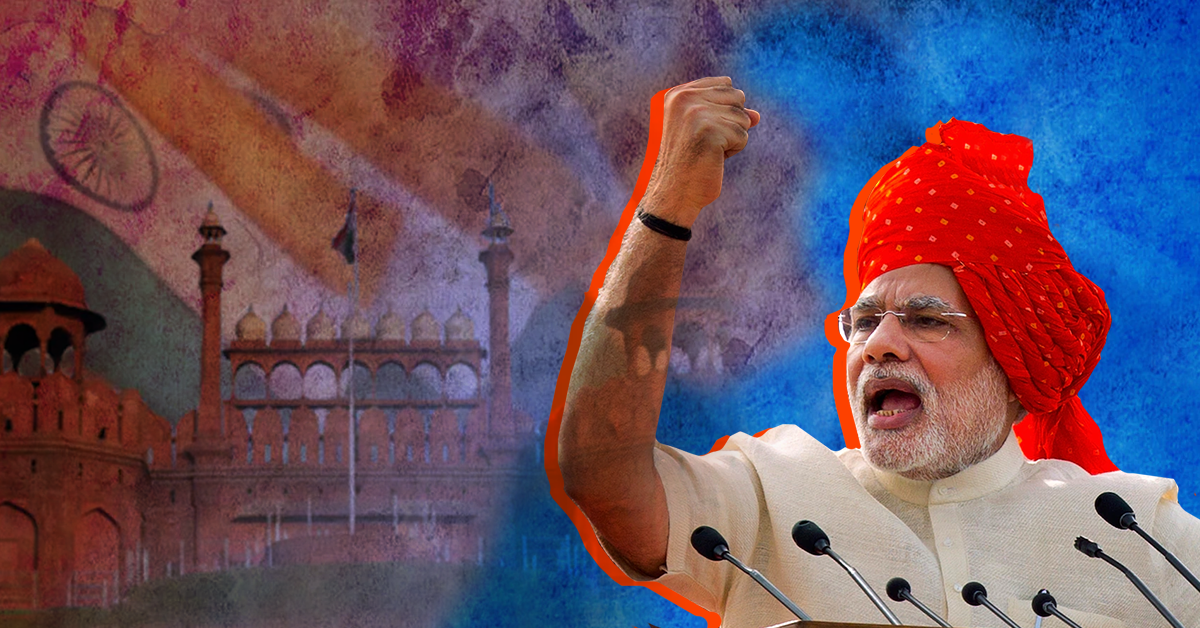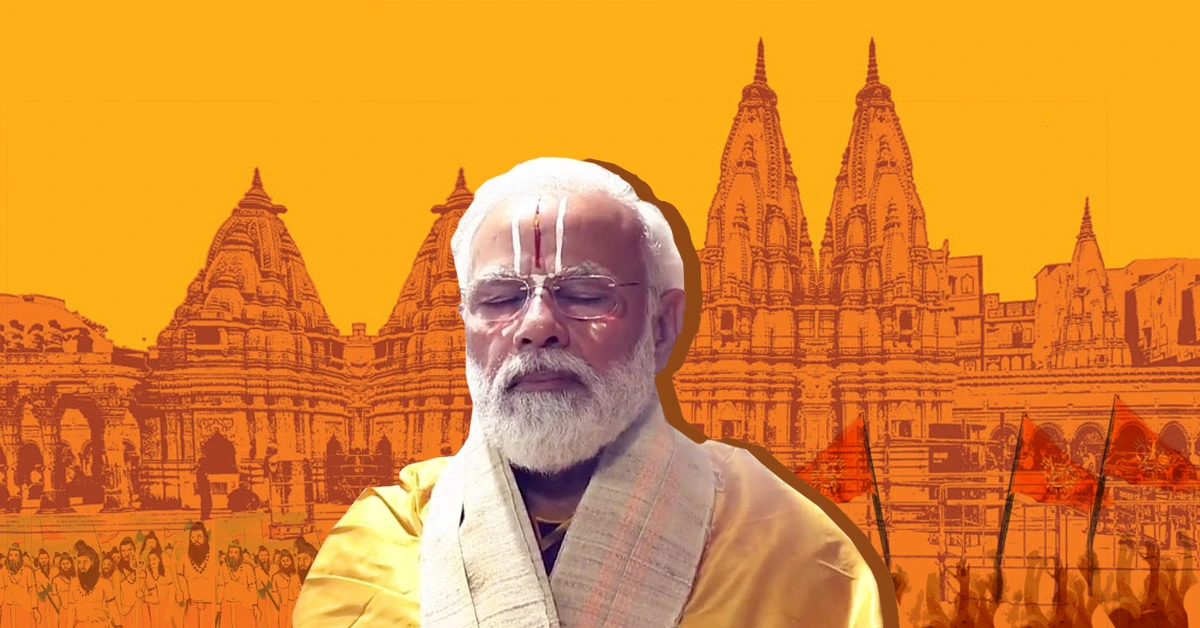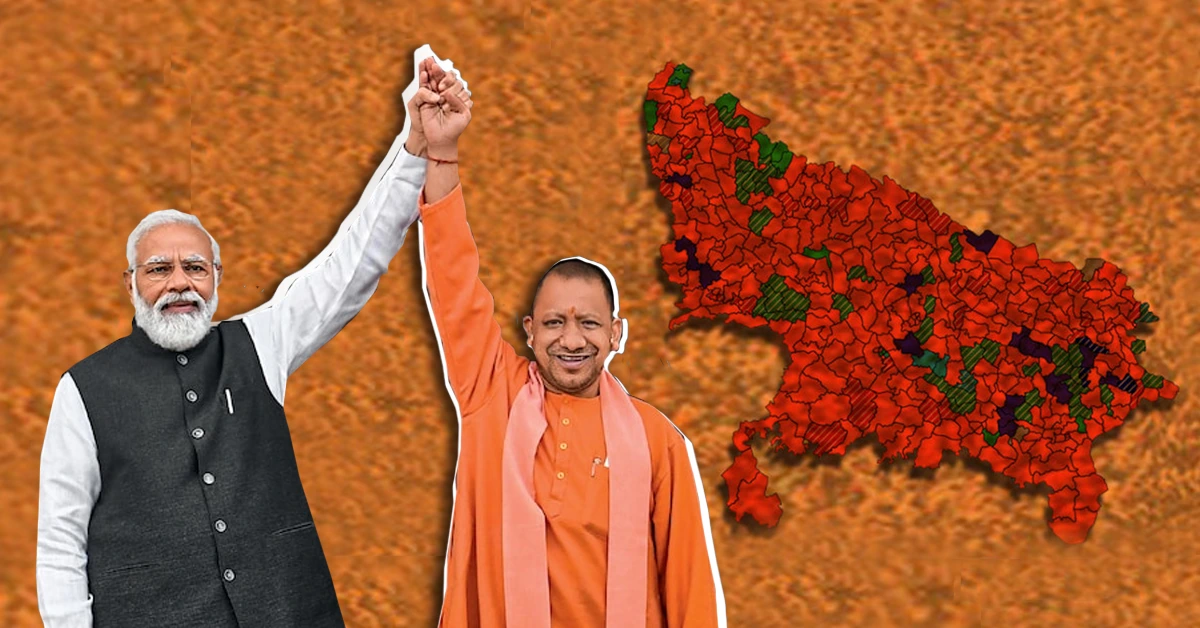Prime Minister Narendra Modi's philanthropic endeavors, exemplified through generous donations to education, healthcare, and environmental conservation, have left a lasting impact on India. His dedication to public service, including donating prestigious awards and prize money, sets a positive example for others to actively participate in philanthropy and bring about meaningful →Read More →
- November 30, 2023
- 12 Mins Read
Moving Mountains - Modi's role in Uttarkashi Tunnel Rescue Ops
Despite facing relentless criticism, Prime Minister Narendra Modi’s commitment to the safety and well-being of every Indian has proven unwavering. The Silkyara tunnel rescue mission stands as a testament to Modi’s exceptional leadership, turning challenges into triumphs and exemplifying a new era where every Indian life matters under his governance.

click play to listen to the article
— Swatantyaveer Savarkar on the death of his brother, Dr. Narayanrao Savarkar, after the later was lynched in the anti-Brahmin riots by butchers supporting Congress ideology.
A parade of intellectually bankrupt critics, fueled by baseless animosity, blindly ignore Modi’s triumphs. As they wallow in their own ignorance, the resilient leader continues to soar, leaving detractors drowning in a sea of unfounded hatred.
Senile Critics: Narendra Modi attracts numerous critics, yet none of them seem capable of offering any substantial or meaningful criticism. Instead, the majority rely on senile and intellectually deficient arguments rooted in manipulated videos, edited clips, or downright cringeworthy memes. Questions like why Modi pushed Zuckerberg in a photo-op, the reason behind his decision to grow a beard, why he offered a hug, or why he waved from the indigenous Tejas aircraft exemplify the feeble nature of such criticisms. Just recently, these critics went as far as labeling him a “Panauti” after India lost a World Cup match. Self-proclaimed liberals enthusiastically embraced the term, completely disregarding its misogynistic origins.
During the tenure of the UPA government, supporters of the BJP voiced vehement opposition to the Congress and its allies. But this opposition was rooted in Congress’ abysmal performance, anti-Hindu conspiracies, frequent terror attacks on Indian citizens, and a continuous stream of corruption scandals. This dissatisfaction towards the Congress never translated into animosity or ill-will towards the nation. There was no craving for the failure of ISRO missions, no inclination to cheer for foreign teams against India, no desire to question India’s armed forces, and no wish for unfortunate incidents to unfold so as to exploit them as opportunities to criticize the Congress once more.
In stark contrast, Modi haters display a disturbing mindset, even expressing hopes for the failure of Tejas aircraft merely because Modi participated in a sortie aboard one of them. This depravity among those who oppose Modi was further evident during the rescue operations for the workers trapped inside the Silkyara tunnel in Uttarkashi as their sick minds seem to be praying for the rescue mission’s failure, seemingly eager to label Modi as a panauti once again. The intense animosity towards Modi has blinded perpetual critics to the extent that they overlook the achievements he has accomplished, with the successful rescue operation being a notable example of recent times.
Moving Mountains: After a grueling 17 days, 41 workers who were trapped inside the Silkyara tunnel were successfully evacuated. In this remarkable rescue operation, considered one of India’s most daring, Prime Minister Narendra Modi played a crucial role.
Incorporating guidance from Prime Minister Narendra Modi, a simultaneous implementation of a five-pronged approach was undertaken to facilitate an expeditious rescue. First, a 4-inch supply lifeline was immediately established to provide dry ration and maintain oxygen supply. A few days later the rescuers successfully inserted a larger pipe enabling supply of cooked food to the trapped workers.
The Indian Air Force, with a commitment to expediting the operation, swiftly airlifted auger machines for horizontal drilling from various locations across India. Additionally, a specialized plasma machine from Hyderabad was airlifted to expedite the final drilling efforts. The Indian Air Force was mobilized to quickly address every request for additional equipment, ensuring a prompt resolution, and finally Rat-hole miners were put into action to complete the final removal of the debris.
The Indian Railways were activated to transport essential equipment and machinery, some weighing up to 75 tons, to support rescue operations. Various locations across the country supplied machines, robots, and ground-penetrating radars. Swift mobilization of innovative technologies, including drones and cameras, took place. Green corridors were established for the rapid movement and timely deployment of equipment on the road. Online consultation with various experts was done extensively and few of them were even flown down to the site to bring every bit of their experience to the effort.
In 2016, PM Modi launched India's first-ever National Disaster Management Plan (NDMP), charting a visionary course to fortify India against disasters. This comprehensive framework guides all phases of disaster management, aiming to drastically reduce losses and create a resilient nation that can effectively cope with calamities at all levels.
The Prime Minister’s keen supervision became the linchpin in orchestrating a synchronized response. The orchestration of a rapid and coordinated effort to transport machinery and deploy experts from various corners of the country and the world demonstrates exemplary leadership and undoubtedly played a crucial role in expediting the rescue and relief operations.
In crisis situations, effective communication becomes a lifeline, offering emotional support and ensuring the flow of essential information. The Modi government promptly established a landline facility within the tunnel, equipping trapped workers with handsets for communication. Simultaneously, camps were arranged for the families, enabling them to stay in touch with their loved ones inside.
Utilizing the communication channels and a colonoscopy video camera, a team of 28 medical staff conducted a swift physical examination of the trapped workers. Additionally, three psycho-social specialists were deployed to address and support the mental health needs of the individuals in distress. This comprehensive approach not only ensured timely medical assessments but also prioritized the psychological well-being of the trapped workers. Medicines of the vitamin and antidepressants variety pumped in through the channels further aided the trapped workers. The trapped workers were also provided with board games and mobile phones for playing video games to alleviate their stress.
As the multi-agency endeavor to rescue the trapped men neared success, precautionary measures were in place. Scores of ambulances stood by, and an Indian Air Force helicopter was present at the site for any emergency. A special ward at the community health center was made ready to accommodate all evacuated workers, and hospitals throughout the district, along with AIIMS Rishikesh, remained on high alert.
The mission encountered challenges, including falling debris causing injuries to rescue workers, multiple breakdowns of the drilling machine, and even a minor earthquake occurred. A loud cracking noise, considered to be similar to earlier collapses, panicked the workers, leading to halt the work for three days. Yet the sheer determination of the rescue personnel inspired by Modi government’s dedication and support ensured that the mission was swift, efficient and effective.
The Indian Air Force airlifted machines and a plasma device, while Rat-hole miners tackled the debris. Indian Railways, activated by Modi’s directive, transported hefty equipment nationwide. Innovative technologies, including drones, were swiftly mobilized, creating green corridors for efficient deployment. Online consultations with experts added invaluable insights, emphasizing a collaborative effort. Modi’s vigilant supervision orchestrated a synchronized response, ensuring effective solutions. Medical teams, equipped with a colonoscopy camera, conducted swift examinations. Psychological support, board games, and antidepressants alleviated stress for the trapped workers. As the multi-agency mission approached success, precautionary measures were in place, with ambulances, an Air Force helicopter, and medical facilities on standby.
PM in Action: Prime Minister Modi’s swift and decisive action in mobilizing vital resources during this critical time deserves commendation. In a remarkably short period, he demonstrated exceptional leadership by ensuring that necessary assets were deployed promptly to address the situation.
The Prime Minister’s Office (PMO) was actively engaged in the rescue operations right from the time of the collapse on 12 November 2023. Deputy Secretary to the PMO, former advisor to the Prime Minister and Officer on Special Duty (OSD) and many other officials lived in a container while remaining stationed in Uttarkashi until the successful completion of the rescue operation on 28 November 2023. They were actively monitoring the situation on a day-to-day basis and providing daily updates to Prime Minister Narendra Modi. In addition, the Chief Minister of Uttarakhand, Pushkar Dhami dedicated several hours daily to monitor and aid the rescue operations at the collapse site, while General VK Singh, Nitin Gadkari, and several other ministers made frequent visits to review and oversee the ongoing rescue efforts.
A high-level meeting was previously convened by the government to explore various options, with specific agencies assigned distinct responsibilities during the session. Personally visiting the collapse site, the Principal Secretary to the Prime Minister engaged with the trapped workers through communication lines, assuring them of a safe rescue. Narendra Modi maintained continuous communication with stakeholders at various levels even during his travels. He paid meticulous attention to the minutest details of the rescue operation, offering guidance and advice as needed.
This rescue mission was yet another example of how during any crisis or calamity, the Modi government gets into a mission mode, doing all that is possible to ensure a coordinated and mission-focused strategy for a successful outcome. A comprehensive “whole government approach” was adopted, involving coordination with relevant ministries / organisations, including the Indian Army, Indian Air Force, Indian Railways, Border Roads Organisation, National Disaster Response Force, National Disaster Management Authority, Uttarakhand government, Uttarkashi district administration, and private entities as needed. As many as 17-plus agencies were involved in the rescue operation and yet all of them remained in perfect sync with each other. The involvement also spans across numerous states, extending from Odisha to Chhattisgarh, Madhya Pradesh to Uttar Pradesh, and from Gujarat to Rajasthan, Haryana to Delhi, and naturally, Uttarakhand—highlighting the widespread collaboration in the ongoing efforts.
"When we have you as the PM and people were saved from other countries, we were in our country and therefore we had nothing to worry about," said Gabbar Singh Negi during a conversation with PM Modi after being rescued from the collapsed tunnel.
The New India: The current trending Netflix series ‘The Railway Men’ exposes the Congress government’s shocking apathy in the face of disasters. In the face of any disaster, the Congress governments consistently favored the well-being of the Gandhi family and its cronies over that of Indian citizens. Their persistent choice to prioritize personal gain over the lives of Indians is evident, as they continually focus on filling their own coffers with little regard for the life of Indians. In stark contrast, the entire Uttarakhand episode demonstrates yet again that when it comes to Prime Minister Narendra Modi, he will leave no stone unturned to ensure the safety of any Indian, whether that Indian is stuck in a tunnel inside a mountain, or an Indian trapped abroad on foreign soil.
“When we have you as the PM and people were saved from other countries, we were in our country and therefore we had nothing to worry about,” said Gabbar Singh Negi during a conversation with PM Modi after being rescued from the collapsed tunnel. The trust is because of Modi government’s proven track record. In 2015, during Operation Raahat (Yemen), 4748 Indians and 1962 foreign nationals from 41 countries were rescued by the Modi government. In 2016, under Operation Sankat Mochan (South Sudan), more than 500 Indians were rescued. In 2020, under Operation Samudra Setu—carried out worldwide during Covid, 3992 Indians were evacuated by sea. Around 192000 Indian citizens are said to have been brought back to the country during the Covid pandemic. In 2021, under Operation Devi Shakti (Afghanistan), more than 800 Indians were rescued. In 2022, under Operation Ganga (Ukraine), 22500 Indians and 147 individuals from 18 countries were rescued. In 2023, under Operation Kaveri (Sudan), 3862 Indians were rescued. And in 2023, under Operation Ajay (Israel), 1347 Indians were rescued.
While India has faced disasters before, the level of concern and monitoring witnessed during the Silkyara tunnel incident is unprecedented. In the past, casualties during disasters were often taken for granted without generating the necessary urgency and empathy to save lives. In contrast, the events at the Silkyara tunnel signify a revolutionary shift, showcasing a concentrated effort by numerous government and private agencies under the leadership of PM Modi.
This is the New India under Narendra Modi, where every Indian life matters!
Tags: The New India, Narendra Modi
Share this article:
Leave a Comment
Recommended For You
Prachand — India’s first Made in India Light Combat Helicopter is another milestone towards self-reliance in the defence sector and Atmanirbhar Bharat initiative led by Prime Minister Narendra Modi.
The Lutyens believes their visceral hatred for PM Modi gives them the ticket to use any means to destabilize the country in order to weaken Modi. But in spite of all the attempts by this syndicate, Modi has successfully managed to bring in transformation that India much needed.
As India turns 75, Modi's role in development is only evolving and expanding. Only asinine assessments of a pessimist opposition would ignore the crucial role of Modi and the BJP in shaping this decade, and determining the trajectory of the decades to follow.
India stands transformed under Modi’s leadership, achieving milestones in infrastructure, security, and economic growth once neglected under Gandhi rule. Yet, persistent pessimism blinds us to this progress. To secure India’s future, voters must embrace decisive leadership and reject divisive dynasties.
The next time you question Modi’s culpability, you have to remind yourself how easy it is to fall for the causal narrative or made without knowledge of history and reality. The Modi government has single-mindedly been focusing on civilizational revival, governance and capacity building.
The latest election results have also established that a good majority of Indians perceive Modi to be a man they can trust, a man who can bring about development, a man who can bring in change, a man who can transform their lives for the better.
Under Narendra Modi's visionary leadership, India's space achievements have surged. From Chandrayaan-3 to strategic successes like Mission Shakti, his support revitalized India's space sector. Modi's focus on private partnerships and innovation ignited growth, as seen in skyrocketing startup numbers and investments. India's ascent in space technology under his guidance marks →Read More →
Atal Setu or the Mandovi River Bridge, a dream project of Goa Chief Minister Manohar Parrikar is expected to decongest Panaji traffic and serve as a bypass for those who want to travel from north to south without entering Panaji.
A New India started taking shape under the leadership of Narendra Modi. An India that came out of the cusp of indecisiveness and apathy, to a New India testified by the spirit of change.










